Market
DAOs Need to Address Critical Issues for Long-Term Success

Decentralized autonomous organizations (DAOs) have become popular in Web3 as an alternative to traditional organizational structures. Their bottom-up decision-making, driven by token-based voting enforced and executed by smart contracts, aims to increase transparency and participation.
However, as DAOs grow beyond theoretical governance experiments, they face significant hurdles. BeInCrypto spoke with Danny Cooper, Venus Protocol’s Vanguard Team Lead, to understand how low voter turnout, large token holders, and decision paralysis hinder effective leadership.
A Promising Alternative
DAOs were once hailed as the future of governance, structures that could operate without centralized control, guided purely by code and community consensus. The vision was simple: a transparent, democratic system where every participant has a voice and makes decisions through token-based voting.
These organizations use a blockchain to facilitate self-enforcing rules or protocols. The blockchain’s smart contracts store these rules, while the network’s tokens incentivize users to safeguard the network and vote on regulations.
Since the first DAO launched on Ethereum in 2016, these organizations have entered the realms of venture capital, social initiatives, and public goods funding. But with their philosophy now implemented, their flaws have begun to surface.
DAOs often struggle with balancing decentralization and the need for effective leadership, raising questions about whether they are genuinely the ideal governance model or simply a stepping stone toward something more refined.
Lowered Voter Turnout
DAOs operate without a central authority, with governance decisions distributed among their members through code-based mechanisms. This decentralized structure was designed to empower members to participate in decision-making through token voting mechanisms.
However, there have been many instances where equally distributed voting power did not yield the expected results. Frequent voting on every issue can discourage participation.
“As DAOs grow, decision-making can indeed become cumbersome,” said Cooper.
Since many DAOs use referendum-style voting, they assume members will thoroughly research proposals. However, time constraints, lack of information, or simple disinterest can lead to low voter turnout or uninformed voting decisions.
Waiting for every DAO member to vote on a proposal can also slow the decision-making process, especially when an urgent solution is needed.
Segmenting voting matters by priority and topic and assigning them to specific delegates can solve this issue.
“Decentralized decision-making can scale with the implementation of sub-DAOs and layered governance systems, which delegate decision-making to smaller, focused groups. This approach reduces operational complexity while empowering specialized teams to act autonomously within defined boundaries. Advanced governance tooling and clear, codified processes ensure efficiency and coherence across a growing, decentralized community,” Cooper added.
Other options can remedy decreased participation, though they also come with risks.
Increased Centralization Among Major Players
To address low voter turnout, some DAOs allow less active participants to entrust their voting power to more informed members to increase overall engagement.
However, this system does not eliminate the risk of influence by the original owners. They could still acquire a majority of transferable voting tokens, allowing them to manipulate decisions that may not align with the DAO’s best interests.
Consequently, centralization risks also rise. In December 2024, the Cambridge Centre for Alternative Finance, a research institute based at the University of Cambridge, published a study examining the centralization level among decentralized finance (DeFi) projects.
The analysis focused on the following DAOs: AAVE, Compound Finance, Convex Finance, Curve Finance, Frax Finance, Instadapp, Lido, MakerDao, Rocket Pool, and Uniswap.

The study revealed that power within several leading DeFi DAOs is highly concentrated, with governance often dominated by a few influential players.
Researchers used the Gini coefficient to measure the DAOs’ governance token distribution and voting. This coefficient measures the inequality of governance token distribution within these protocols, with 1 representing maximum inequality and 0 representing perfect equality.

The Cambridge study found that these 10 DAOs had Gini coefficients ranging from 0.97 to 0.99 as of October 2024. For comparison, South Africa, the most income-unequal country in the world, had a Gini coefficient of 0.63 in 2024, according to Statista data.
MakerDAO had the highest coefficient of 0.99, while Rocket Pool had a coefficient of 0.97.
Whale Activity Compromises DAO Governance
The concentration of voting power among high-net-worth individuals can also marginalize smaller token holders, potentially leading to a situation in which a small group of influential actors effectively controls governance decisions.
“Whale influence in DAOs can skew governance outcomes,” said Cooper.
The concentration of power within some DAOs also raises concerns about potential rent-seeking behavior and conflicts of interest. When token holders are involved in multiple projects, their own interests may influence decisions within a particular DAO, potentially leading to outcomes that do not align with the best interests of the DAO.
A notorious example of whale risks in DAOs came to light in February 2023 when a Bubblemaps investigation revealed that Andreessen Horowitz controlled more than 4% of Uniswap’s UNI token supply.

Uniswap requires 4% of votes to pass any proposal, meaning that wallets owned by a16z can collectively change the outcome of any governance vote, challenging Uniswap’s claim of having a decentralized governance model.
The firm used its governance control that month when it leveraged a 15 million UNI token voting block to vote against a proposal to use the Wormhole bridge for Uniswap V3 deployment on the BNB Chain. a16z is apparently heavily invested in rival bridge platform LayerZero, which it favored for the deployment.
According to Cooper, DAOs must implement mechanisms to safeguard the organization from these types of manipulation in cases of governance attacks.
“Enhanced transparency through auditable voting records and the introduction of reputation-based deterrents penalize malicious actors, while layered safeguards like quorum thresholds prevent collusion and vote-buying from compromising governance integrity,” he said.
Ensuring that these mechanisms work will prove vital to avoid critical threats like vote-buying, whale activity, or collusion.
Scalability Issues
Many of the issues facing DAOs are directly or indirectly linked to the limitations in their scalability. These challenges pose significant risks to long-term growth and development.
As the number of participants and the volume of transactions increase, the DAO’s infrastructure may struggle to keep pace, potentially leading to delays in processing transactions and other inefficiencies.
Balancing the diverse interests of a DAO’s various stakeholders while simultaneously incentivizing desired behaviors and outcomes presents a significant operational challenge.
“Without central authority, setting long-term goals requires clear structure and alignment incentives. A clear roadmap, built collaboratively and tied to measurable milestones, ensures the DAO remains focused and unified across its decentralized community,” Cooper told BeInCrypto.
Similarly, the ongoing maintenance and upgrade of a DAO’s technical infrastructure, including smart contracts, voting mechanisms, and communication channels, is crucial for its smooth and effective operation.
In terms of accessibility, enhancing user experience requires developing and maintaining user-friendly tools. These could be intuitive voting platforms, efficient proposal management systems, and accessible decision-making interfaces.
Since one of the core principles of DAOs is a merit-based contribution, the organization should reward individuals based on the value they contribute.
Therefore, the successful operation of a DAO also requires careful consideration and management of its economic incentives. Initiatives could take the form of effective token distribution models, staking mechanisms, and reward structures.
Alignment with jurisdictional regulations will also be paramount.
Legal and Regulatory Challenges
The legal status of DAOs remains largely unclear within most jurisdictions. Their decentralized and autonomous nature presents challenges for traditional legal frameworks, typically designed for centralized entities with clearly defined legal structures.
As a result, most governments lack specific regulations and legal frameworks to address DAOs’ unique legal and operational characteristics.
Challenges include difficulties in designating legal entity status, ensuring transparency in registration, and addressing the operational complexities associated with decentralization, anonymity, and borderlessness. This ambiguity can erode investor confidence, hinder innovation, and create significant challenges in ensuring compliance with relevant regulations.
However, some jurisdictions have made progress. For instance, Wyoming passed a bill that provides a framework for DAOs of at least 100 members to become unincorporated nonprofit associations.
In 2021, the state passed the Decentralized Autonomous Organization Supplement Act, which extended Wyoming’s LLC laws to include DAOs and provided the first legal framework for their creation and management within the state.
“Emerging solutions include DAO-specific legal entities, such as Wyoming’s DAO LLC, and jurisdictional sandbox programs will enable DAOs to operate with legal clarity while maintaining the decentralized ethos. Self-regulation, backed by auditability and consistent community oversight, strengthens both accountability and credibility,” Cooper told BeInCrypto.
The United Arab Emirates (UAE) also introduced a structured legal framework for DAOs through the RAK Digital Assets Oasis (RAK DAO) last October.
The move also signaled a growing recognition of the potential that DAOs offer.
Fixing Issues Will Be Critical for a Sustainable Future
At large, DAOs offer a potential paradigm shift in corporate governance, presenting an alternative to traditional corporate structures. This decentralized model, with its emphasis on transparency and equitable participation, holds the potential to significantly impact the formation, management, and regulation of companies in the long term.
However, while their potential remains significant, several key challenges must be addressed to facilitate the widespread adoption of DAOs beyond current niches.
“To thrive in these areas, hybrid governance models that integrate expert advisory boards with community oversight will be critical, ensuring technical precision alongside decentralized values,” Cooper concluded.
To ensure the success of these governance models, stakeholders must address critical challenges, including the need for greater regulatory clarity, the development of a sustainable technological infrastructure, and the elimination of centralization risks.
Disclaimer
Following the Trust Project guidelines, this feature article presents opinions and perspectives from industry experts or individuals. BeInCrypto is dedicated to transparent reporting, but the views expressed in this article do not necessarily reflect those of BeInCrypto or its staff. Readers should verify information independently and consult with a professional before making decisions based on this content. Please note that our Terms and Conditions, Privacy Policy, and Disclaimers have been updated.
Market
MiCA vs Trump’s Crypto Policy: Battle for Crypto Dominance


Since the implementation of MiCA in the EU and the shift in US policy under President Trump, both jurisdictions have progressed in crypto legislation, albeit with distinct approaches. Europe got a head start by becoming the first to establish a comprehensive and unified regulatory framework for crypto-assets. Meanwhile, the US is catching up, with more capital to offer and a larger user base.
Manouk Termaaten, CEO of Vertical Studio AI, and Erwin Voloder, Head of Policy at the European Blockchain Association, shared their perspectives with BeInCrypto on the areas where the EU and the US are demonstrating leadership in the high-stakes development of crypto legislation and who will ultimately set the pace for global crypto regulation.
EU’s MiCA and Early Regulatory Certainty
By implementing the Markets in Crypto-Assets (MiCA) regulation on December 30, 2024, the European Union made history as the first jurisdiction to create a complete regulatory structure for crypto-assets that applies to all its member nations.
Since then, leading companies like Standard Chartered, MoonPay, BitStaete, Crypto.com, and OKX, to name a few, have secured their licenses.
The United States, in turn, was slower to act. Instead of lobbying for comprehensive crypto legislation, industry leaders have concentrated on getting approval from the US Securities and Exchange Commission (SEC). Under the Biden administration, that turned out to be a particularly hard feat.
“The EU definitely had a first-mover advantage in getting regulatory certainty out the gate with MiCA. Especially since at the time, the US was retreating from leadership in the digital asset space and the industry was facing what amounted to persecution back home in many cases,” Voloder told BeInCrypto.
Former SEC Chair Gary Gensler became known within the walls of the crypto industry as being particularly hostile toward the technology, taking a controversial regulation-by-enforcement policy stance. Crackdowns became common, and many innovators packed their bags and moved abroad, seeking opportunities in friendlier jurisdictions.
“The US relied on existing agencies like the SEC instead of building a unified crypto law. Remember, Gary Gensler almost cracked down on the market and caused massive fear but never managed to get anything through. This does not mean regulation will never come and creates legal uncertainty that’s driven many projects overseas,” Termaaten said.
Now, under Trump, things have taken quite a turn.
How Does the US Approach Crypto Innovation?
The Trump administration aims to foster a predictable environment for US crypto innovation and expansion through clear regulatory frameworks. It strongly emphasizes keeping that innovation within the United States to establish its global leadership.
In pursuit of this goal, the administration has created working groups and task forces to develop detailed regulatory frameworks, including stablecoins and crypto asset classification guidelines.
“What we’ve seen under the Trump administration so far has been a complete roll-back of Biden-era regulations and weaponization of the agencies against crypto in favour of a light- touch, pro-innovation stance. He’s dismantling the DOJ’s Crypto Enforcement Team, the SEC’s new Crypto-Asset Task Force has a new mandate, under new leadership in Commissioner Pierce, and there’s ongoing investigations in the House against the systematic de-banking of digital assets businesses, and banks with revelations coming to light almost weekly,” Voloder explained.
As part of this new chapter in crypto regulation, the United States intends to forge its path, developing distinct crypto regulations rather than adopting the EU’s MiCA framework. Its intent diverges significantly from the European approach.
MiCA’s Regulatory Framework in the EU
MiCA provides the EU with a comprehensive and unified regulatory framework for crypto assets, extending bank-like rules focused on financial stability and consumer protection.
The regulation mandates licensing for crypto service providers and stablecoin issuers, aligning them with traditional finance and supporting the creation of a Central Bank Digital Currency (CBDC) as a digital euro to safeguard monetary sovereignty.
“The EU treats crypto as part of its traditional financial system– it’s cautious, centralized, and prioritizes regulation through MiCA and the upcoming digital euro (CBDC),” Termaaten told BeInCrypto.
The US, however, operates with a contrasting attitude.
US Focus on Private Innovation and Opposition to CBDCs
Trump has clearly stated that he intends to eliminate any regulations that promote CBDCs, citing concerns about government overreach and the erosion of financial freedom.
The United States now charts a policy course that champions blockchain technology through private innovation while firmly opposing CBDCs. This stance is underscored by a recent executive order in which the White House argues that CBDCs “threaten the stability of the financial system, individual privacy, and the sovereignty of the United States.”
Trump has also clarified that stablecoins are the priority for innovation, as they can help reinforce US dollar dominance.
Meanwhile, a notably fragmented approach has characterized the advancement of crypto legislation in the US. The absence of nationwide regulations has allowed certain states to establish an early lead, but others continue to lag in pursuing crypto innovation.
“The US, especially under Trump’s recent shift, is leaning harder into private-sector innovation, explicitly opposing a CBDC and focusing on blockchain as a new tech frontier, which the USA will be the capital from. The EU’s approach is about control and stability; the US’s is about flexibility and economic leadership through innovation. Both aim to protect consumers, but through very different methods,” Termaaten said.
These fundamentally different philosophies also allow for the analysis of which regulations yield the most favorable outcomes.
What are the Financial Burdens of MiCA Compliance?
The significant investment companies must make to obtain a MiCA operating license has drawn scrutiny. Though member states set varying fees, these are generally steep.
“[There are] high costs that are not in proportion compared to the gain for a business. It also just adds a layer of legal complexity most projects dont want to bring into their project. At Vertical AI, we decided it’s strategic to proceed with becoming compliant, but others could just geo-block EU users to avoid the burden,” Termaaten told of his personal experience.
MiCA mandates minimum capital requirements based on the crypto services offered. These range from €50,000 for advisory and order-related services to €125,000 for exchange and trading platforms and up to €150,000 for custody services. Businesses must maintain this capital as a financial safeguard.
Beyond minimum capital requirements, companies must factor in government and legal fees, local presence costs, bank setups, and ongoing operational costs.
“MiCA is an expensive regulation. Compliance in Europe can be an exorbitant expense and I think the main challenge going forward at least for start-ups is justifying the high up-front costs of advisory, licensing, auditing etc., when many of these companies have a fixed burn they need to manage. The last thing you want to be doing as a start-up is piling all of your capital into compliance when that money could have been put to better use developing/refining your product and your GTM,” Voloder told BeInCrypto.
In contrast, the US allows crypto companies greater leeway to innovate.
Flexible Regulatory Stance and Private Sector Innovation in the US
While the European Union’s MiCA regulation establishes a comprehensive and structured regulatory environment, the United States has opted for a more flexible regulatory stance.
This approach prioritizes the growth of private blockchain innovation, aiming to encourage rapid development and technological advancement within the crypto industry by providing a less restrictive regulatory environment.
“The US favors letting the private sector innovate, especially with USD-backed stablecoins, which it believes can expand dollar dominance globally. This approach avoids centralization while still enabling digital payments innovation. It’s very much a “let the market lead” philosophy. In my opinion, the way to go with crypto,” Termaaten told BeInCrypto.
Should the US continue developing crypto-friendly legislation, it will quickly position itself to outpace Europe in this regulatory race.
“The EU still leads in terms of finalized law (MiCA), but the US is regaining ground by openly backing the crypto industry and promising regulatory clarity. If that clarity turns into actual, friendly regulation, the US will become more attractive than the EU– especially for developers and fintech firms who value speed and scale + access to more venture capital,” Termaaten said, adding that, “While the EU is a large crypto market, the US still dominates in capital, user base, and market liquidity.”
This contrasting approach, favoring a more agile and less burdensome regulatory environment, illustrates the fundamental differences in how each jurisdiction envisions the future of digital finance.
Will the US or EU Ultimately Secure Global Leadership?
While the European Union secured an early advantage in the global crypto regulatory landscape through the comprehensive and unified framework of MiCA, its thoroughness and the significant financial investment required for licensing have inadvertently created barriers to rapid innovation.
This situation has opened a window of opportunity for the United States, particularly with the shift in administration under Trump. By adopting a more permissive and innovation-centric approach, dismantling perceived regulatory obstacles, and prioritizing private blockchain development, the US is quickly emerging as the preferred jurisdiction for crypto innovation.
Despite Europe’s regulatory clarity, the US’s focus on flexibility, coupled with its robust capital markets and extensive user base, positions it to potentially eclipse the EU as the true leader in fostering the next wave of crypto advancements, provided it can deliver on its promise of clear and supportive legislation.
Disclaimer
Following the Trust Project guidelines, this feature article presents opinions and perspectives from industry experts or individuals. BeInCrypto is dedicated to transparent reporting, but the views expressed in this article do not necessarily reflect those of BeInCrypto or its staff. Readers should verify information independently and consult with a professional before making decisions based on this content. Please note that our Terms and Conditions, Privacy Policy, and Disclaimers have been updated.
Market
Canary Capital Aims to Launch TRON-Focused ETF
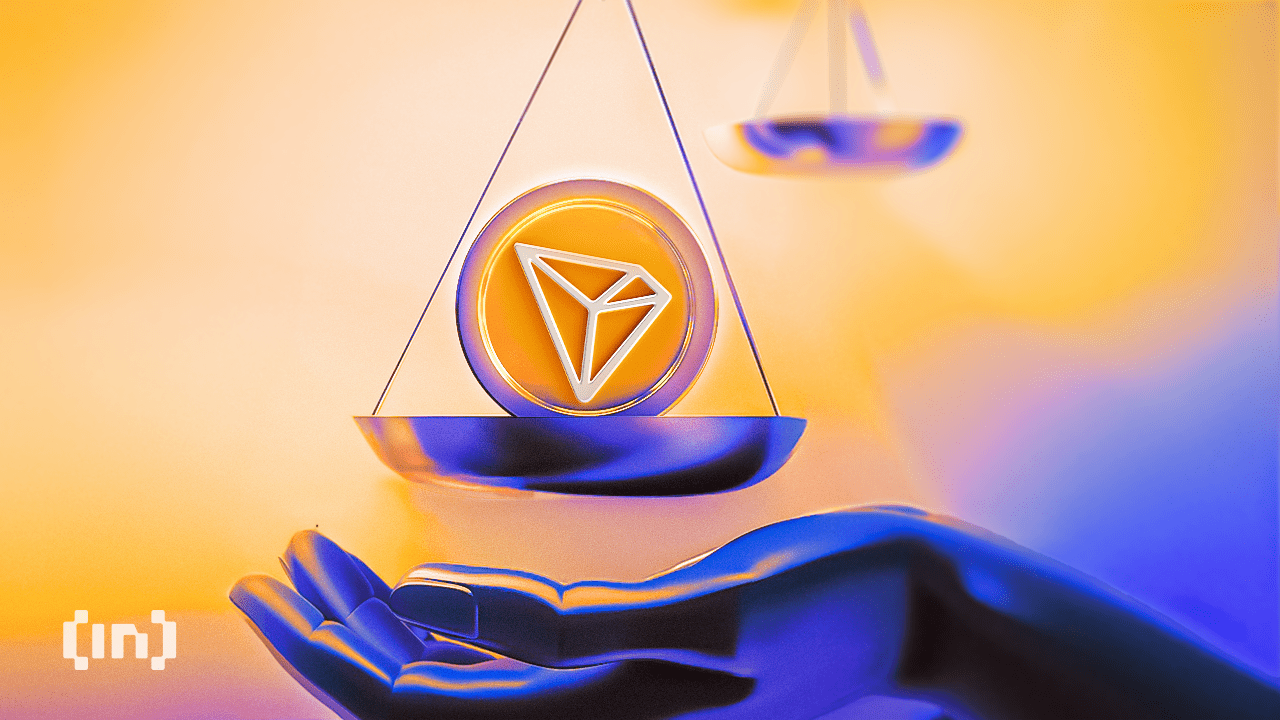
Canary Capital has filed a Form S-1 registration with the US Securities and Exchange Commission (SEC) to launch a spot exchange-traded fund (ETF) focused on Tron (TRX).
The proposal, submitted on April 18, is the first of its kind to offer investors exposure to TRX’s market performance while also providing staking rewards. This sets the fund apart from previous spot crypto ETF proposals.
Canary Capital’s TRX ETF Could Test SEC Stance on Staking Assets
The filing designates BitGo Trust Company as the custodian for TRX holdings and appoints Canary Capital as the fund’s sponsor.
Justin Sun, the founder of Tron, weighed in on the development, encouraging US investors to act promptly. He emphasized TRX’s potential for long-term growth and suggested institutional interest would likely surge if the ETF is approved.
“US VCs should start buying TRX — and fast. Don’t wait until it’s too late. TRX is a price that only moves one way: up,” Sun said on X.
According to BeInCrypto data, TRX is currently the ninth-largest crypto by market capitalization, valued at approximately $22.94 billion.
Moreover, Tron’s blockchain has gained strong traction in stablecoin settlements, ranking second only to Ethereum. Its efficiency in processing fast and low-cost transactions has made it a preferred choice for Tether’s USDT, based on data from DeFiLlama.

While the proposal has created a buzz in the market, questions remain over its chances of gaining regulatory approval. The inclusion of staking within the ETF is a bold move, but the SEC has historically opposed similar features in other crypto funds.
The SEC has flagged staking services within investment products as potential unregistered securities, leading to increased scrutiny.
Due to this, past Ethereum ETF proposals were forced to remove staking components to align with regulatory expectations.
Nonetheless, several firms, including Grayscale, continue to push for altcoin ETFs that incorporate staking or offer broader asset exposure.
Still, regulatory uncertainty clouds the Canary TRX ETF proposal, especially in light of past controversies involving Justin Sun. The network has also faced allegations of being used by illicit actors, claims it has publicly denied.
If approved, Canary Capital’s ETF would mark a historic milestone by combining exposure to TRX with staking rewards. This structure could attract both retail and institutional investors seeking yield alongside market performance.
Disclaimer
In adherence to the Trust Project guidelines, BeInCrypto is committed to unbiased, transparent reporting. This news article aims to provide accurate, timely information. However, readers are advised to verify facts independently and consult with a professional before making any decisions based on this content. Please note that our Terms and Conditions, Privacy Policy, and Disclaimers have been updated.
Market
XRP Consolidation About To Reach A Bottom, Wave 5 Says $5.85 Is Coming

Reason to trust

Strict editorial policy that focuses on accuracy, relevance, and impartiality
Created by industry experts and meticulously reviewed
The highest standards in reporting and publishing
Strict editorial policy that focuses on accuracy, relevance, and impartiality
Morbi pretium leo et nisl aliquam mollis. Quisque arcu lorem, ultricies quis pellentesque nec, ullamcorper eu odio.
XRP is still in consolidation mode after hitting a new seven-year high in January 2025. This consolidation has seen the price drop slowly, but steadily, losing around 40% of its value since then. Currently, bulls seem to have created support for the altcoin at $2, as this level continues to hold even through crashes. Thus, it has created the expectation that the bottom could be close for the XRP price, and this could serve as a bounce-off point.
XRP Price Consolidation Could Be Over Soon
Taking to X (formerly Twitter), crypto analyst Dark Defender revealed that the consolidation that the XRP Price has been stuck in for months now is coming to an end. The analyst used the monthly chart for the analysis, calling out an end and a bottom for the XRP price. According to him, this is actually the “Final Consolidation” for XRP, suggesting that this is where a breakout would start from.
Related Reading
With the consolidation expected to come to an end soon, the crypto analyst highlights what could be next for the altcoin using the 5-Wave analysis. Now, in total, these five waves are still very bullish for the price and could end up marking a new all-time high.
For the first wave, Dark Defender calls it the Impulsive Wave 1, which is expected to begin the uptrend. This first wave is expected to push the price back to $3 before the second wave starts, and this second wave is bearish.
The second wave would trigger a crash from $3 back toward $2.2, providing the setup for the third wave. Once the third wave begins, this is where the crypto analyst expects the XRP price to hit a new all-time high. The target for Wave 3 puts the XRP price as high as $5, clearing the 2017 all-time high of $3.8.
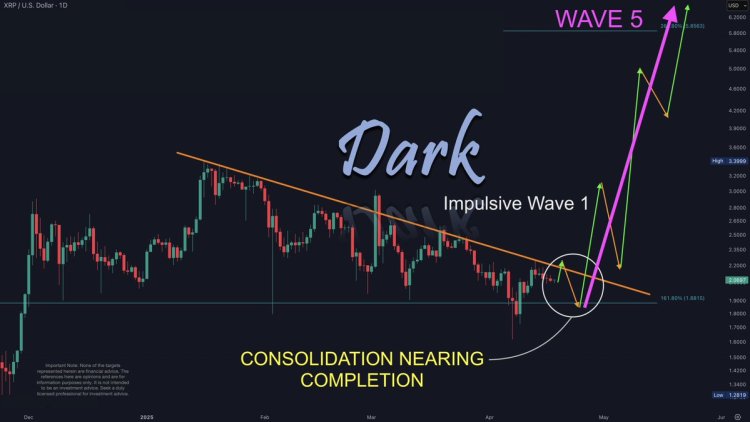
Next in line is the fourth wave, which is another bearish wave. This wave will cause at least a 30% crash, according to the chart shared by the crypto analyst, taking it back toward the $3 territory once again. However, just like the second bearish wave, the fourth bearish wave is expected to set up the price for a final and more explosive Wave 5.
Related Reading
Once the fifth wave is in action, a brand-new all-time high is expected to happen, with the price rising over 100% from the bottom of the fourth wave. The target for this, as shown in the chart, is over $6.
As for the crypto analyst, the major targets highlighted during this wave action are $3.75 and $58.85. Then, for major supports and resistances, supports are $1.88 and $1.63, while resistances lie at $2.22 and $2.30.
Featured image from Dall.E, chart from TradingView.com
-
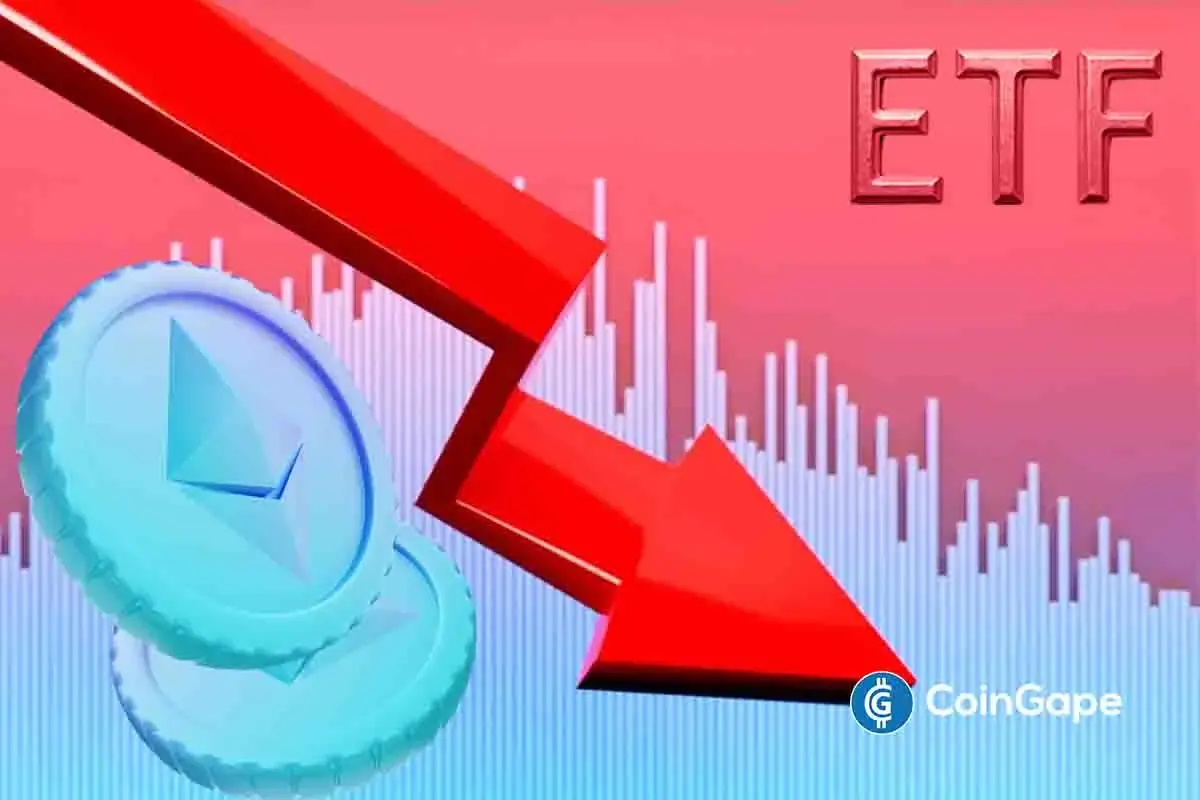
 Altcoin22 hours ago
Altcoin22 hours agoEthereum ETFs Record $32M Weekly Outflow; ETH Price Crash To $1.1K Imminent?
-
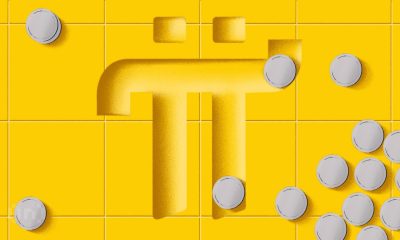
 Market14 hours ago
Market14 hours agoPi Network Roadmap Frustrates Users Over Missing Timeline
-

 Ethereum21 hours ago
Ethereum21 hours agoEthereum Price Stalls In Tight Range – Big Price Move Incoming?
-

 Market15 hours ago
Market15 hours agoMEME Rallies 73%, BONE Follows
-

 Market13 hours ago
Market13 hours agoSolana (SOL) Price Rises 13% But Fails to Break $136 Resistance
-

 Market20 hours ago
Market20 hours agoHow $31 Trillion in US Bonds Could Impact Crypto Markets in 2025
-
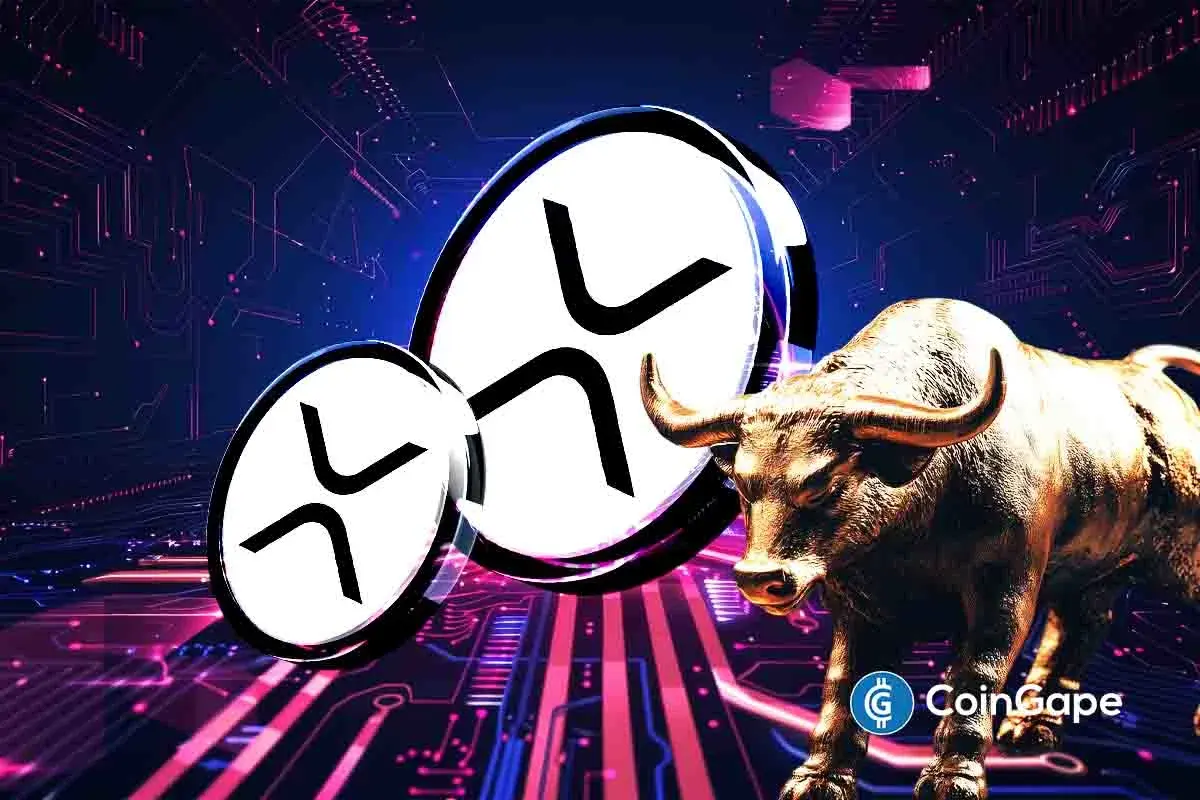
 Altcoin18 hours ago
Altcoin18 hours agoXRP Price History Signals July As The Next Bullish Month
-

 Market21 hours ago
Market21 hours agoAre Ethereum Whales Threatening ETH Price Stability?

























